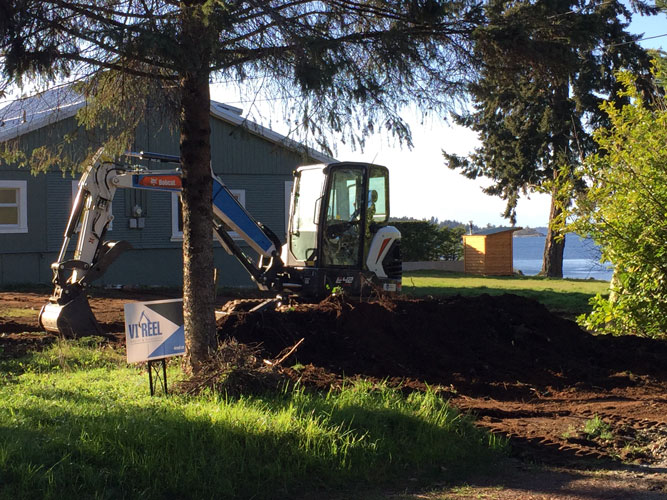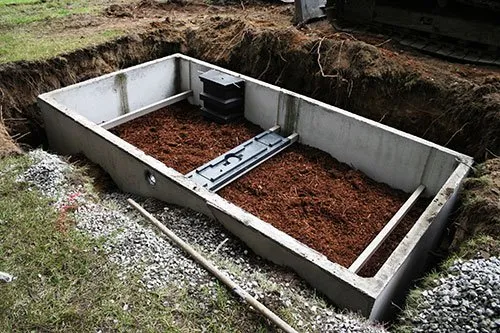Thinking about a new system or just trying to keep yours healthy? Here are the fast answers people search for most.
How does a septic system work?
Household wastewater flows into a buried tank where solids settle (sludge) and fats float (scum). Partially clarified effluent exits to a drainfield where soil treats it. That’s it: tank separates, field treats.
How often should I pump my septic tank?
Rule of thumb: every 3–5 years, sooner for big households/small tanks. Health Canada recommends pumping when the tank is approximately one-third full of solids (every 3 years for most homes). Ontario’s SepticSmart echoes the 3–5 year inspect/pump cycle.
How can I tell my tank is getting full?
Classic red flags include slow drains, gurgling sounds, sewage odours, wet or spongy ground over the field, greener-than-normal grass, or actual backups. If you see any of these, stop using a lot of water and call a pro.
What’s the lifespan of a septic system?
It depends on soil, design, installation, water use, and maintenance. Typical ranges you’ll see are ~20–40 years for conventional systems; well-built concrete tanks/fields can go 50+ years with care. Abused systems can fail much sooner.
How much space/clearance do I need (Ontario example)?
Ontario’s Building Code sets minimum setbacks. A treatment unit must be at least 1.5 m (5 ft) from a structure, 15 mfrom a well, and 15 m from a lake (more distances apply by site). Your local designer/inspector will confirm for your lot.
How much does pumping cost / what about maintenance?
Costs vary by tank size, access, and location, but the big point is that regular inspections and pumping prevent expensive failures. Plan a professional inspection every 3–5 years and pump as needed; keep records. (A missed pump is the #1 killer of drainfields.)
What’s the worst thing for a septic system?
Hydraulic overload (too much water at once), flushing wipes/grease/chemicals, driving or building over the field, and skipping pumps/inspections. If you have a well, keep the system far enough away and maintained to protect drinking water.
Can I install my own system?
In most provinces, you’ll need a licensed designer/installer and a permit/inspection. Even where homeowner-installed installs are allowed, you still must meet code (setbacks, sizing, soil/perk tests). Cutting corners here is how people end up replacing fields early.

Quick care checklist (save this)
-
Pump/inspect on a 3–5 year cycle (or when solids hit one-third).
-
Spread out laundry/showers; fix leaks fast.
-
No wipes, grease, paint, or harsh chemicals.
-
Don’t drive/park/build over the tank or field.
-
Keep trees/shrubs off the field; roots kill pipes.
-
Keep food scraps/odours out of the system if you’re on a holding tank and follow alarm rules. Government of Canada+1
Here at VIREEL, we do this work every week, and we’ve seen it all, from healthy 30-year systems to fields choked by one missed pump. If you are looking for answers about your setup (design, permits, maintenance schedule), we’ve got you.
Questions or need service?
Call 250-323-1010 (toll-free 1-855-962-1562) or email info@vireel.ca.
Based in Nanaimo, B.C.


